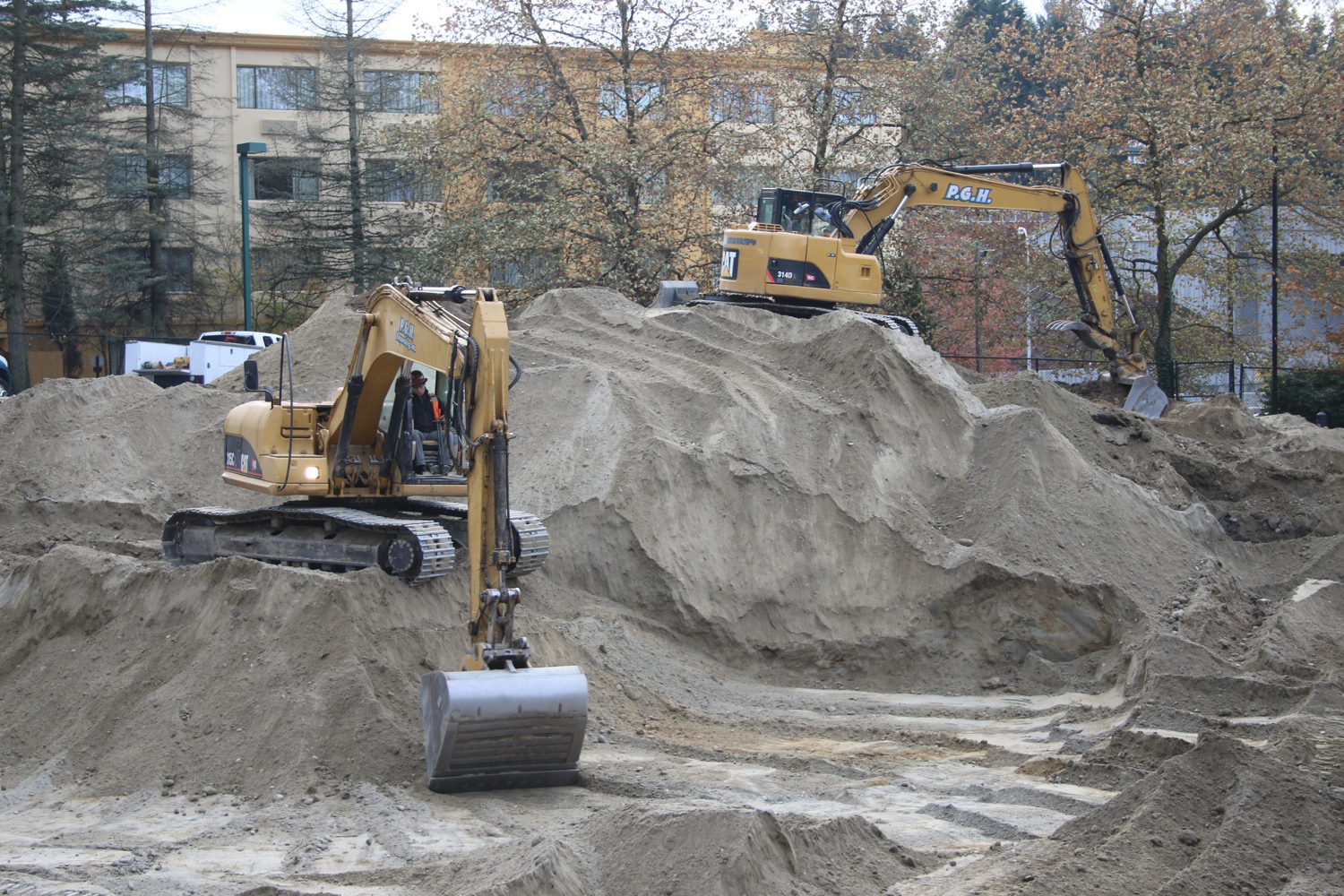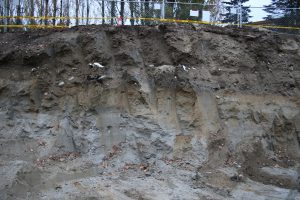Here’s an excerpt from the Geotechnical Report concerning the subsurface conditions and a cutaway photograph that shows the varying soils as we dig down. It looks like the boring tests (noted in the report) are consistent with the real world conditions. This photo is of the far side of the former DL (near the old tech office) and stands 15-18 feet tall.
6. SUBSURFACE CONDITIONS
The subsurface soil and groundwater conditions were evaluated by completing three exploratory borings. The borings were completed using rubber-tracked, hollow stem auger drilling equipment to maximum depth of 36.5 feet below the existing ground surface on April 18, 2014. The approximate locations of the borings are shown on the Site Plan on page A-2 of the appendix. The details and explanations of the borings are presented on pages A-4 to A-12 of the appendix.
In general, the site consists of approximately 6 to 91⁄2 feet of fill material overlying Pleistocene age recessional outwash (Qvr) deposits and glacial till (Qvt) deposits. The fill material typically consists of brown to light brown, silty SANDS (SM) with varying amounts of organics and gravels. The fill materials are loose to medium dense in consistency with moisture contents being moist. The recessional outwash (Qvr) deposits generally of light brown, fine to medium SANDS with silts (SP-SM) and varying amounts of gravels. Interbedded layers of silty SANDS (SM) were observed in the upper 10 feet of the advance outwash deposits. The advance outwash deposits are loose to dense in consistency with moisture contents being moist to wet. The glacial till (Qvt) were encountered in Boring B-1 at a depth of 35 feet below ground surface. The glacial till typically consist of light gray, silty SAND (SM) with gravels. The glacial till deposits are very dense in consistency with moisture content of wet.
Otto Rosenau & Associates, Incorporated
Geotechnical Engineering, Construction Inspection & Materials Testing
Eastside Preparatory School Science Building ORA Project No.: 14-0232
Groundwater was encountered in the exploratory boring designated as Boring B-1 at a depth of approximately 30 to 33.8 feet below the existing ground surface. The groundwater levels at the site will likely vary with season and precipitation.


